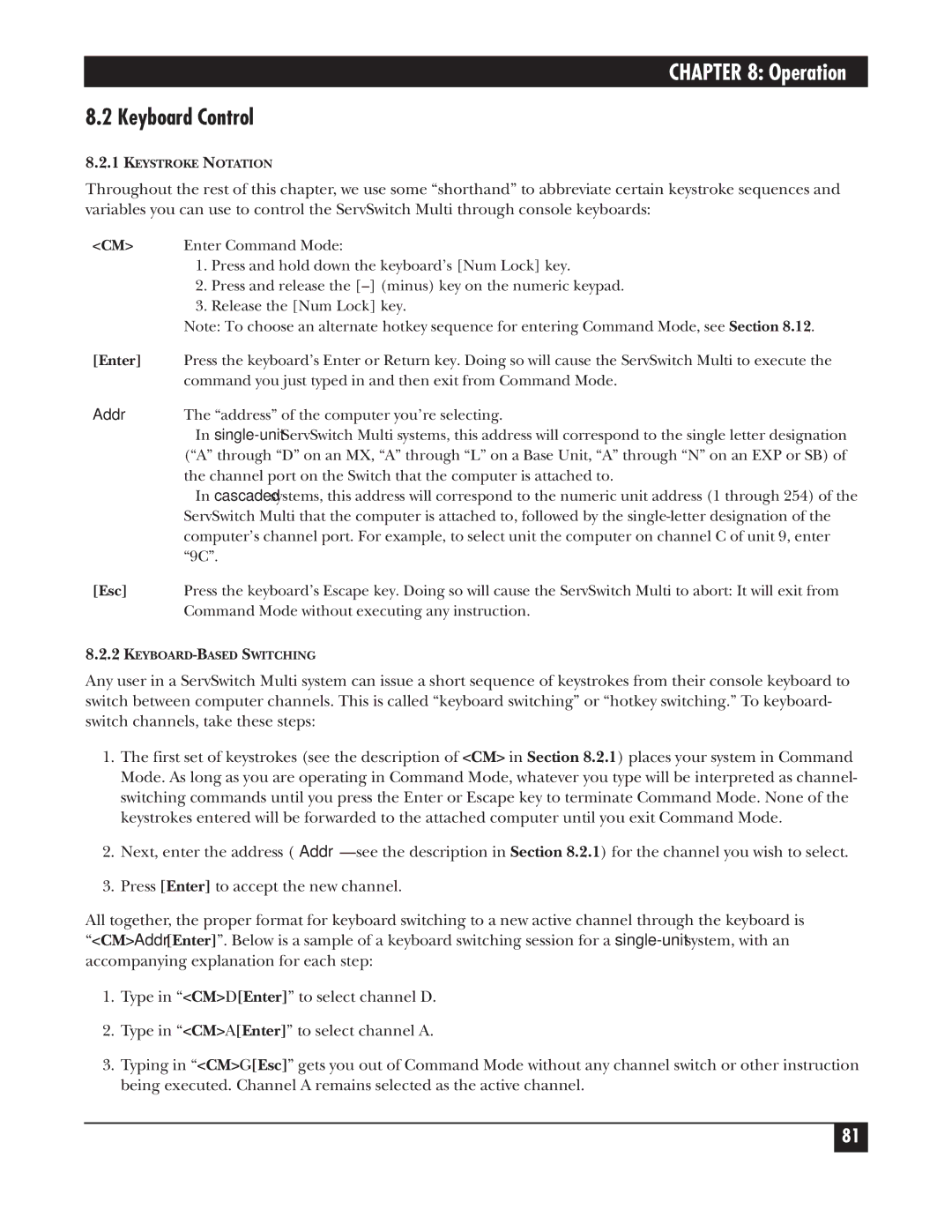
CHAPTER 8: Operation
8.2 Keyboard Control
8.2.1KEYSTROKE NOTATION
Throughout the rest of this chapter, we use some “shorthand” to abbreviate certain keystroke sequences and variables you can use to control the ServSwitch Multi through console keyboards:
<CM> Enter Command Mode:
1.Press and hold down the keyboard’s [Num Lock] key.
2.Press and release the
3.Release the [Num Lock] key.
Note: To choose an alternate hotkey sequence for entering Command Mode, see Section 8.12.
[Enter] | Press the keyboard’s Enter or Return key. Doing so will cause the ServSwitch Multi to execute the |
| command you just typed in and then exit from Command Mode. |
Addr | The “address” of the computer you’re selecting. |
| In |
| (“A” through “D” on an MX, “A” through “L” on a Base Unit, “A” through “N” on an EXP or SB) of |
| the channel port on the Switch that the computer is attached to. |
| In cascaded systems, this address will correspond to the numeric unit address (1 through 254) of the |
| ServSwitch Multi that the computer is attached to, followed by the |
| computer’s channel port. For example, to select unit the computer on channel C of unit 9, enter |
| “9C”. |
[Esc] | Press the keyboard’s Escape key. Doing so will cause the ServSwitch Multi to abort: It will exit from |
| Command Mode without executing any instruction. |
8.2.2
Any user in a ServSwitch Multi system can issue a short sequence of keystrokes from their console keyboard to switch between computer channels. This is called “keyboard switching” or “hotkey switching.” To keyboard- switch channels, take these steps:
1.The first set of keystrokes (see the description of <CM> in Section 8.2.1) places your system in Command Mode. As long as you are operating in Command Mode, whatever you type will be interpreted as channel- switching commands until you press the Enter or Escape key to terminate Command Mode. None of the keystrokes entered will be forwarded to the attached computer until you exit Command Mode.
2.Next, enter the address
3.Press [Enter] to accept the new channel.
All together, the proper format for keyboard switching to a new active channel through the keyboard is “<CM>Addr[Enter]”. Below is a sample of a keyboard switching session for a
1.Type in “<CM>D[Enter]” to select channel D.
2.Type in “<CM>A[Enter]” to select channel A.
3.Typing in “<CM>G[Esc]” gets you out of Command Mode without any channel switch or other instruction being executed. Channel A remains selected as the active channel.
81
